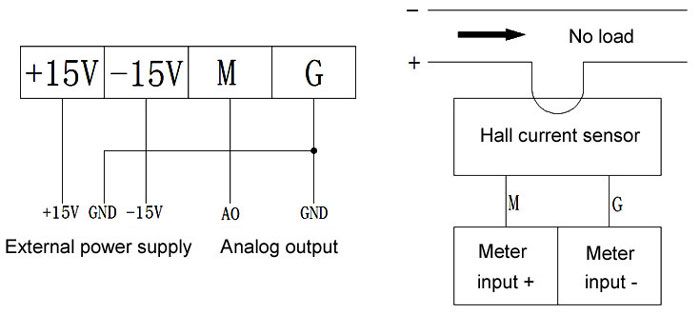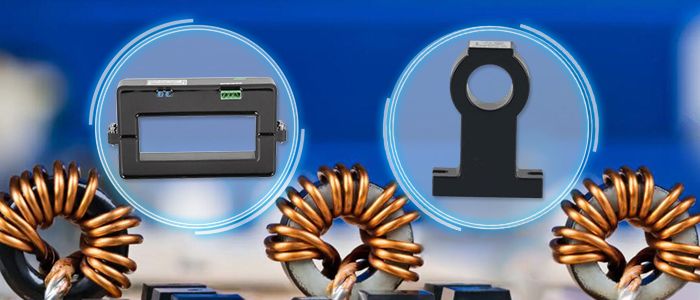Hall Effect Current Sensor
Open Loop Hall Effect Current Sensor, AC 50A to 1500A
Closed Loop Hall Effect Current Sensor, 50A to 1500A
Closed Loop Hall Effect Current Sensor, AC/DC 0-2000A
Hall Effect Current Sensor AC/DC 0-1500A
Hall Effect Current Sensor, AC/DC 0-20000A
Split Core Current Sensor, AC 0-400A/1500A/20000A
Open Loop Hall Effect Current Sensor, DC 0-50A/800A/1500A
Non Invasive DC Current Sensor, 0-20000A, 4-20mA Output
A Hall Effect current sensor is a device that measures electric current—whether AC, DC, or pulsating—using the Hall Effect principle. This principle enables non-contact measurement by detecting the magnetic field generated by current flowing through a conductor. It provides a safe, isolated, and accurate way to measure current, widely used in power electronics, motor control, industrial automation, automotive systems, and renewable energy systems.
Working Principle
At the core of the sensor lies the Hall Effect: when a magnetic field is applied perpendicular to the flow of current in a conductor, a voltage (called Hall voltage) is generated perpendicular to both the current and the magnetic field. A Hall element placed near a current-carrying conductor detects this magnetic field. The generated Hall voltage is proportional to the current and is then processed and converted into a readable output.
Workflow:
- The current flowing through a conductor generates a magnetic field.
- The Hall sensor detects the magnetic flux density.
- The signal is amplified and conditioned.
- The sensor outputs a voltage or current signal proportional to the input current.

Types of Hall Effect Current Sensors
Open-Loop Hall Current Sensor
The open-loop Hall current sensor operates by directly converting the magnetic field generated by the current into a proportional voltage signal using a Hall element. Its structure is relatively simple, which makes it cost-effective and easy to integrate into compact systems. This type of sensor offers fast response time and low power consumption, making it suitable for applications where speed and affordability are prioritized over precision. However, open-loop sensors generally provide lower accuracy and are more susceptible to temperature drift and external magnetic interference. As such, they are commonly used in applications like battery chargers, household appliances, and general-purpose current monitoring.
Closed-Loop (Feedback) Hall Current Sensor
In contrast, the closed-loop Hall current sensor, also known as a feedback sensor, incorporates a compensation coil that actively nullifies the magnetic field inside the sensor. This feedback mechanism ensures that the magnetic flux remains near zero, resulting in a highly accurate and linear output. Closed-loop sensors exhibit strong immunity to noise, temperature changes, and external interference, making them ideal for high-precision and critical applications. Despite their higher cost and more complex circuitry, they are widely employed in motor drives, power supplies, energy metering, and sensitive medical equipment where precise current measurement is essential.

Advantages
Hall Effect current sensors offer several notable advantages that make them highly suitable for a wide range of applications. One of the key benefits is their non-intrusive measurement capability—since they detect current indirectly through the magnetic field, there is no need to physically break the circuit or make direct electrical contact with the conductor. Additionally, SUCH sensors provide electrical isolation between the primary circuit and the output signal, which protects both the measurement system and operators from potential electrical hazards.
These Hall effect sensors can measure AC, DC, and pulsed currents, offering more flexibility than traditional current transformers. They have a fast response time, making them suitable for dynamic systems like motor drives. In addition, Hall sensors are small, energy-efficient, and available in different signal output types—such as voltage, current, or digital—so they can easily connect with controllers and monitoring systems. Their variety of sizes and current ranges also makes them adaptable to many applications, from industrial automation to electric vehicles.
































